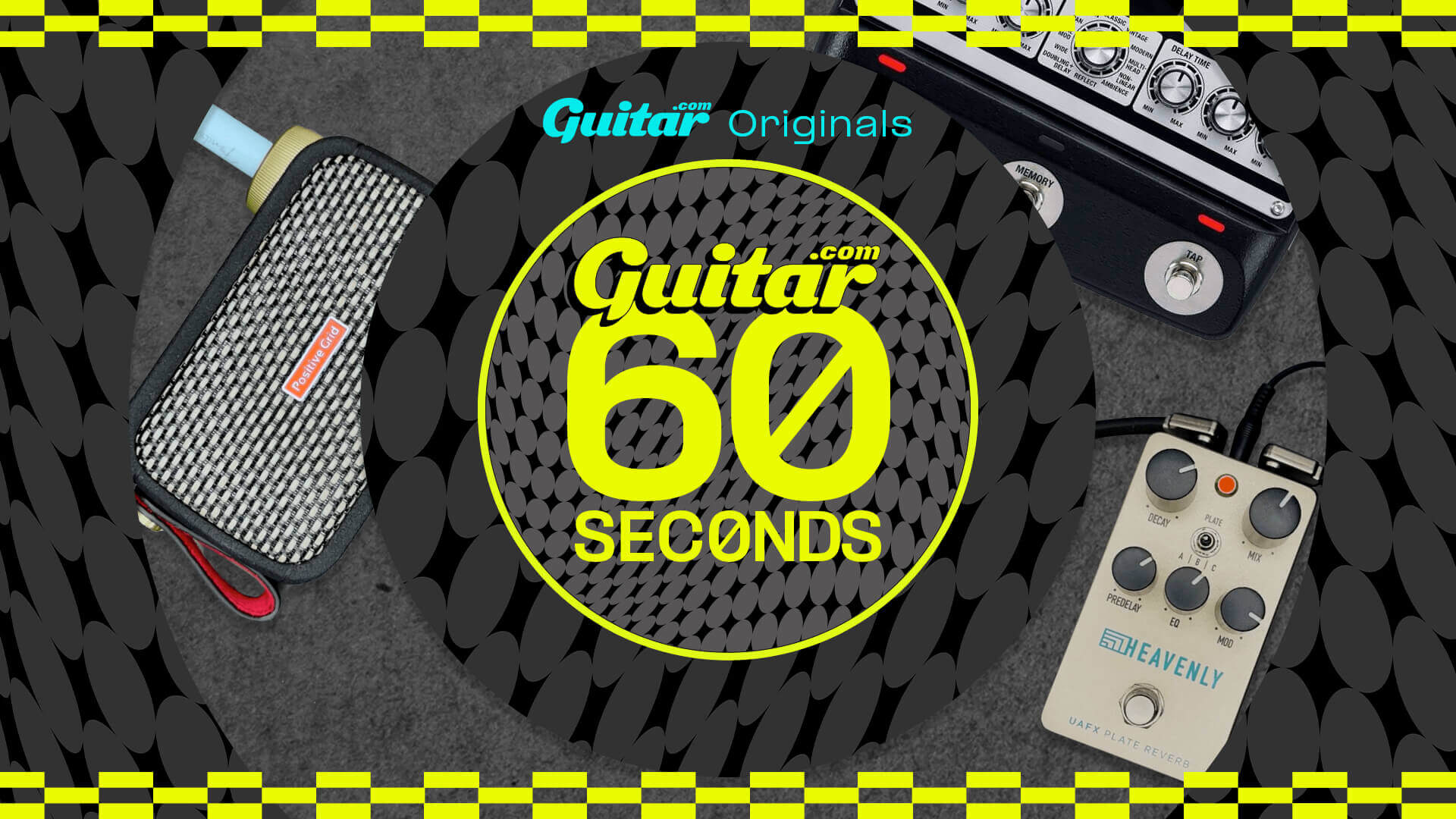Harmony Jupiter Thinline review – is this the best value American-made guitar on the market?
With a price that will barely get you an import guitar from the big three nowadays, can this small-bodied semi help make Harmony a household name again?
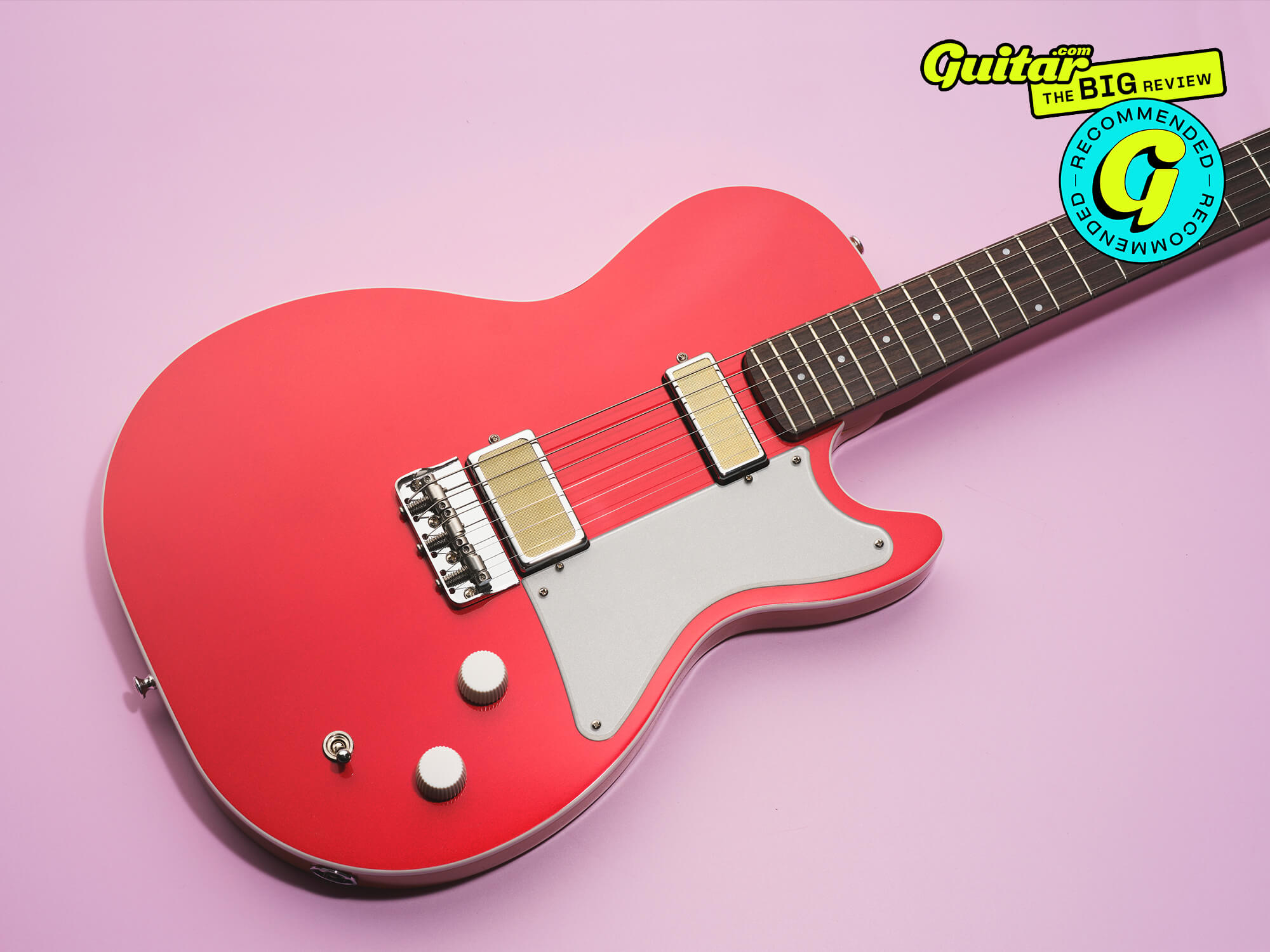
Harmony Jupiter Thinline. Image: Adam Gasson
Review Overview
Our rating
9
Our verdict
$1,499/£1,499, www.harmony.co
There’s no escaping the fact that everything’s more expensive than it used to be. But with guitars it feels like the post-pandemic years have seen prices surge to the point where dreams that many of us had to pick up a US-made instrument for a couple of grand or less are being replaced with aspirational $1,500 Epiphones and Mexican Fenders.
- READ MORE: PRS Myles Kennedy review – more than a PRS Tele, this is a versatile road warrior’s guitar
But there’s still hope for those of us looking for a slice of domestic electric guitar goodness at a reasonable price – since Harmony Guitars returned in 2019, the brand has been producing guitars right here in the USA that have remained impressively affordable. Could this be a Luke Skywalker-style new hope for us cost-conscious guitar players? Well, let’s find out.
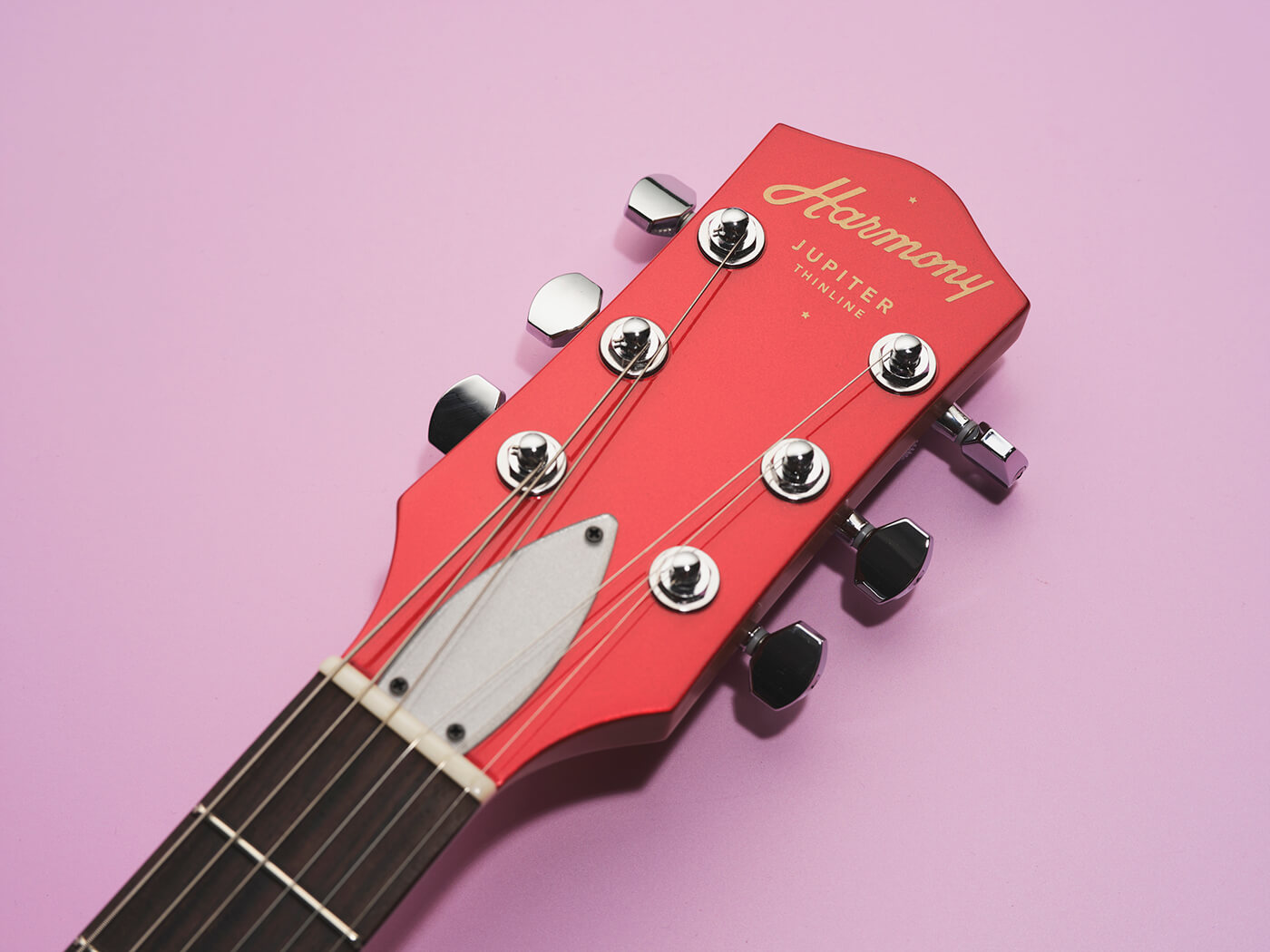
How does the Jupiter Thinline differ from the regular Jupiter?
The Jupiter Thinline is the latest addition to Harmony’s US-made Standard series, and as the name might indicate, it’s a nitro-finished semi-hollow single cut based on the original solidbody Jupiter model that was launched back in 2019.
While Harmony has since produced a series of vintage-faithful models that lean into the eccentric charms of the original models, the Standard series was an attempt to replicate the spirit of the original brand but modernise and streamline it for today’s player – so instead of a bunch of controls and switches, the modern Harmony guitars sport a simple two-knob/three-way-switch configuration, and, in the case of the Jupiter, pair a full-size mini ‘gold foil’ humbucker in the bridge and its mini equivalent in the neck.
Launched last year, the Jupiter Thinline takes the original’s single-cut recipe and swaps the solid mahogany body for a chambered one with a maple cap.
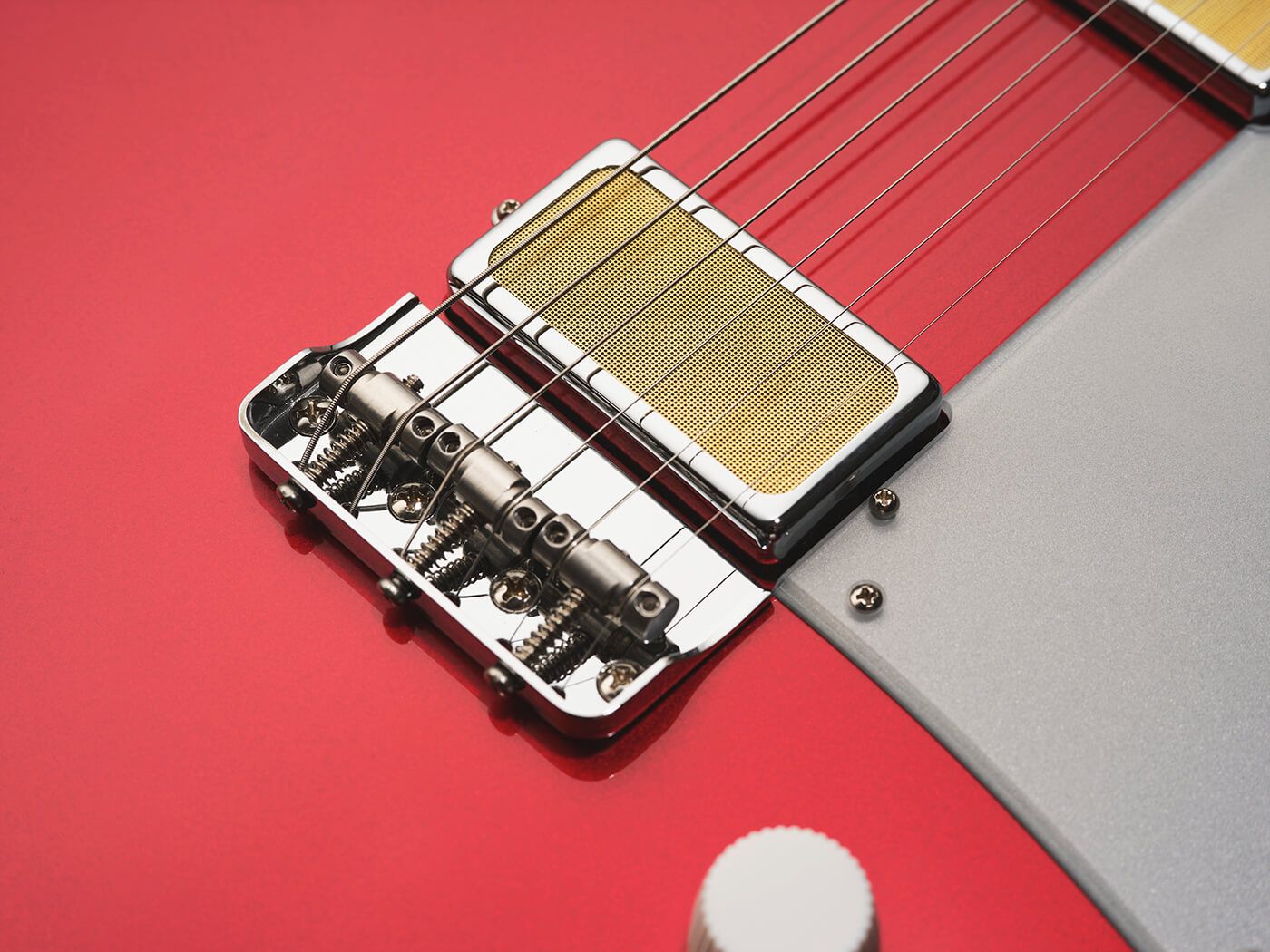
Is the Jupiter Thinline easy to play?
The most striking thing about the Thinline when I take it out of the supplied Mono Vertigo gigbag is the weight – it’s remarkably lightweight even for a semi-hollow, coming in at a shade over 5lbs. This featherlight weight does come at the cost of a bit of neck dive when strapped on, but it’s a trade-off my back would happily make after a few hours of playing standing up.
The pleasant playing experience is continued by the inviting C-shaped neck profile – it feels thin and comfortable resting against the palm. In conjunction with the medium jumbo frets, it makes for a very easy and accessible player for pretty much anyone, with the 25-inch scale meaning that bends are a breeze and the whole thing is very easy to get carried away with in no time at all.
Everything’s also laid out in the most sensible and accessible manner possible. Those retro cupcake knobs might be adorable but they’re also very functional – they’re big enough and grippy enough that you can easily control volume or tone with a single finger, which is great news for volume swells.
Hardware is also of a high standard – the locking tuners are smooth enough to turn without feeling an uncomfortable amount of resistance, and the bridge never feels overly sharp against my hand; this is even more apparent when palm muting.
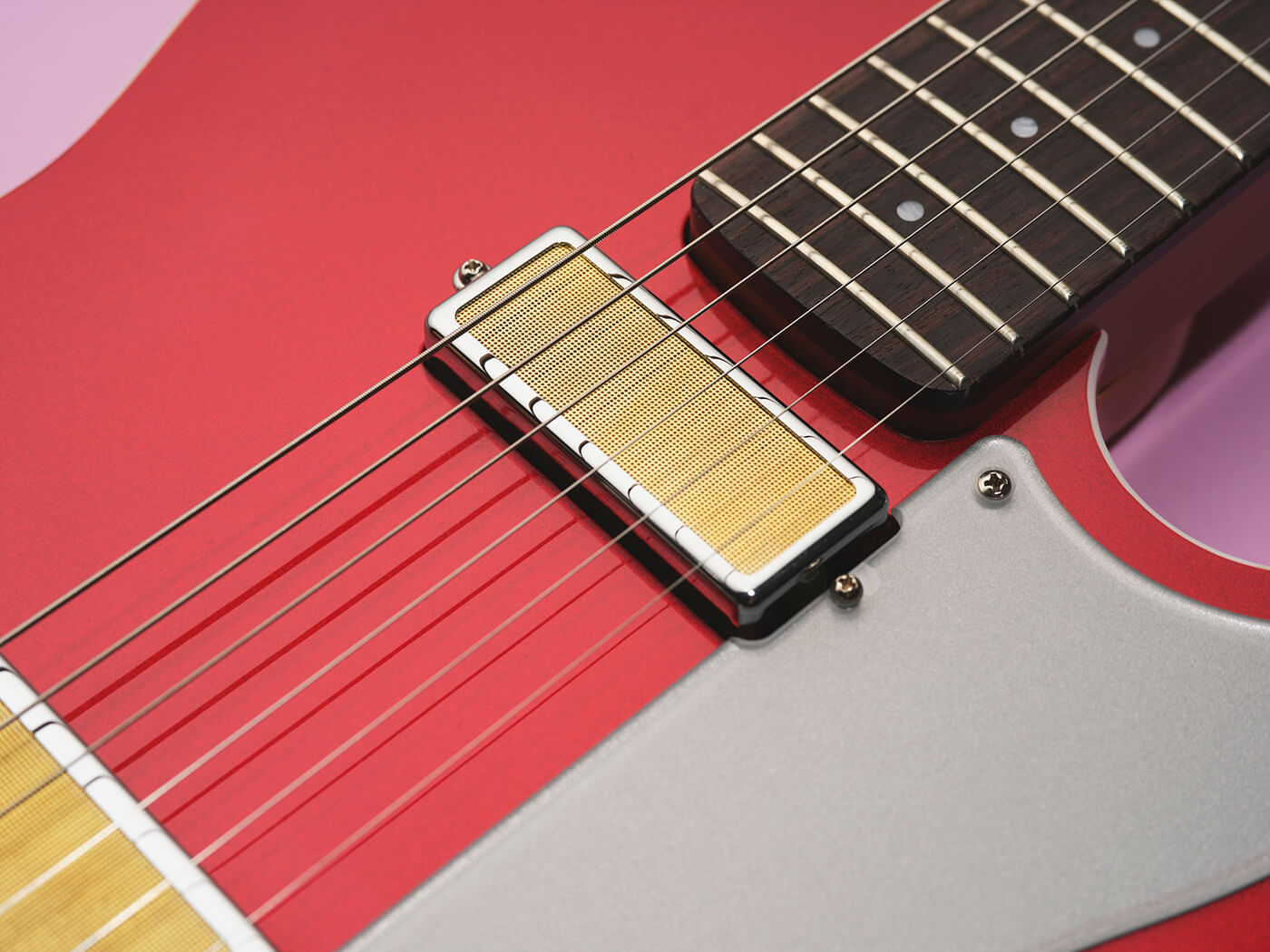
How does the Harmony Jupiter Thinline sound?
As we’re in a catalogue guitar revival kinda mood, I decide to pair the thinline with one of my favourite clean machines of an amp – the Supro 1932R Royale. Very few people are making authentic gold foil pickups in 2024, and most of the time when you see one these days it’s more likely to be more of an aesthetic choice than a tonal one. But when you consider the hum and microphony issues of the originals, that’s probably a good thing – either way, these pickups are more refined and rounded than traditional GFs and that’s no bad thing.
With a hefty amount of reverb, the mini-humbucker is an utter delight – punchy like a mini-humbucker should be but retaining all the bell-like nuances you’d expect out of a Telecaster. In the middle position, it is distinctly warm, and where the Thinline resonance is most apparent. This lends itself to a uniquely rewarding blend of single-coil-meets-humbucker twang. Before I know it, I’m channelling the unconventional rhythmic guitar sounds of Mew.
Even when adding a dose of heavy gain, the notes remain articulate in both positions, and due to the lack of a proper f-hole, it never comes close to sounding painfully harsh or feedback-prone. Coupled with my 1981 Inventions LVL, the Jupiter Thinline showcases a real dynamic versatility – this is a guitar that can easily go from driven 50s chicken picking to the more grandiose fuzzed-out tones of My Bloody Valentine and not miss a step.
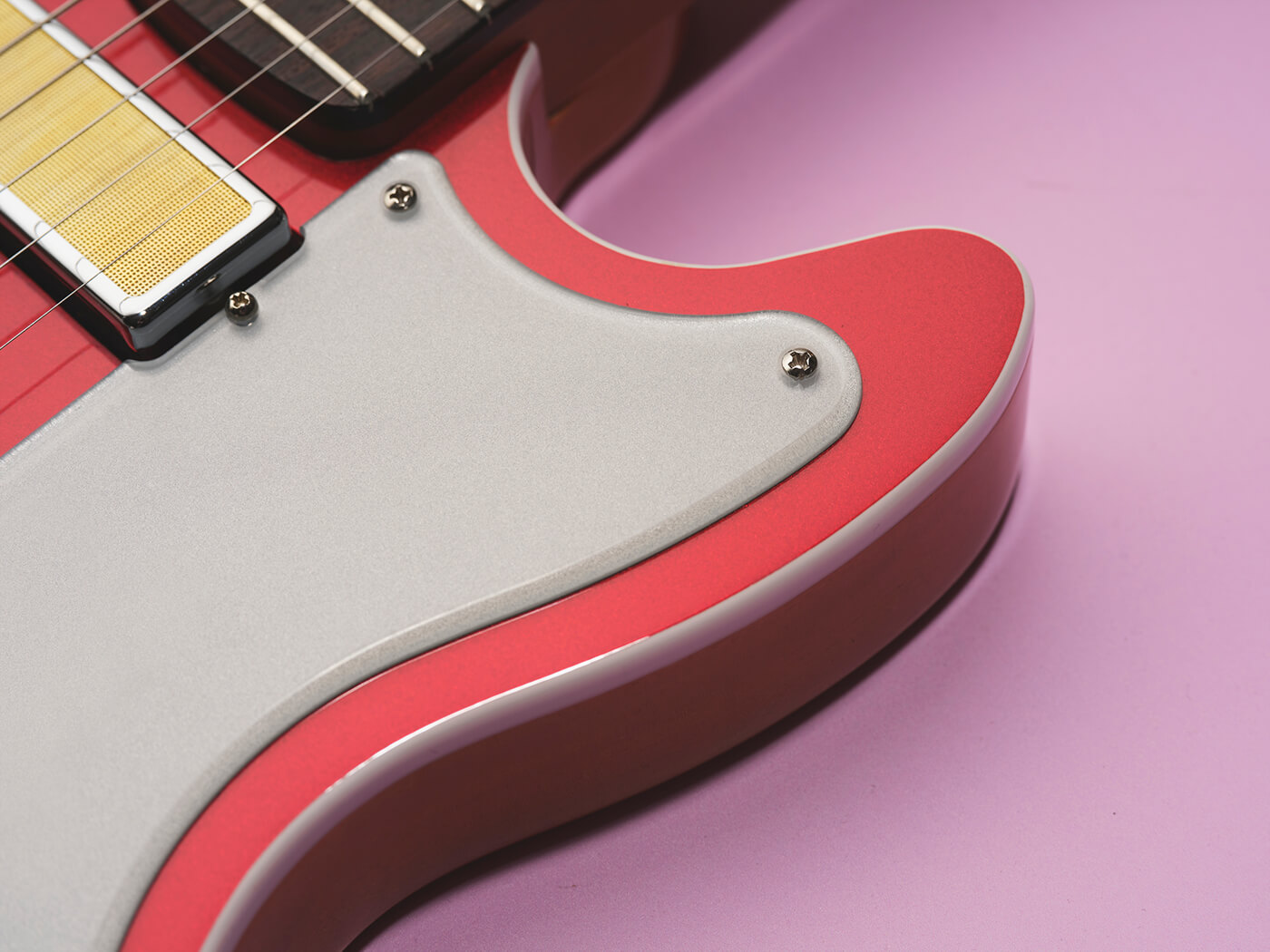
Is the Harmony Jupiter Thinline worth buying?
Despite its long history, the Harmony brand doesn’t carry the same prestige and weight that the likes of Fender, Gibson or PRS do in the minds of many players, but maybe it should – relative to its price point, this is easily one of the best American-made guitars on the market.
My only complaint is the limited finish options – Cherry, Black and Sky Blue might cover a lot of bases, but it’d be great to see a few more options.
Without a doubt, for players looking beyond the scope of the big three and wanting an ultra-light American-made guitar with appointments well above what the competition is offering at the same price point, this guitar is a no-brainer.
Harmony Jupiter Thinline alternatives
It’s telling that there aren’t a huge number of US-made guitars around at this price point – and the options that do exist are a lot more stripped down. The cheapest USA Gibson is the Les Paul Tribute ($1,299/£1,249), while PRS’ S2 Standard 24 ($1,499/£1,495) is a lot of guitar for the money, as is the venerable Fender American Performer Telecaster Hum ($1,449/£1,379).
If you want a semi-hollow however, you’re going to have to turn to overseas, but there’s lots of authentically ramshackle fun to be had with Danelectro’s ’59M NOS+ Semi-Hollowbody ($529/£599). Alternatively, the Sterling By Music Man Valentine Chambered Semi-Hollowbody ($799/£1,079) is a cool modern take on the small-semi thing.
Editor’s note: Guitar.com and Harmony Guitars are both owned by the Caldecott Music Group.
